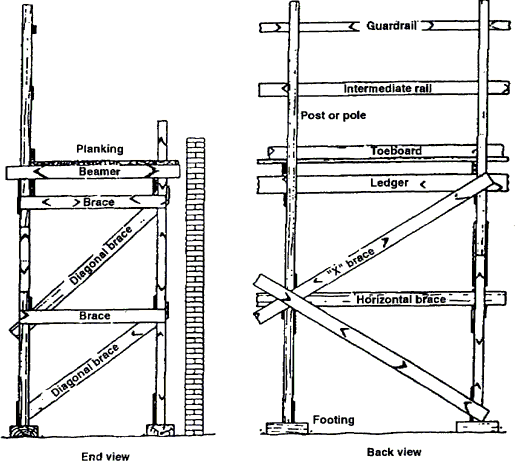Scaffolding in London
This blog will be dedicated to scaffolding information and uses in London and Surrounding areas. Any scaffolding company in London can participate with any information they think is helpful for our readers.
Use, Modification and Maintenance of Scaffolding in the UK
Use, Modification and Maintenance of Scaffolding in the UK
Scaffold modification can be risky, particularly if carried out by persons without adequate experience and competence. Such modifications can lead to instability and an increased risk of persons falling from the scaffold.
Scaffold Users
A scaffold should not be used unless it is properly constructed and is suitable for the purpose for which it is required.
Where the scaffolding exceeds 2m in height, each contractor (including subcontractors and the self-employed) should be satisfied that the scaffold has been inspected by a competent person within the previous 7 days and should, therefore, ask to see the report of the inspection.
Users (including contractors and workers) who discover a serious defect in a scaffold, which may adversely affect their or another’s safety, should stop using that scaffold and report the defect to the site management.
Scaffolding Company in London - Types of Scaffolding to Use

What is scaffolding?
Scaffolding is a temporary structure, which supports the original structure. It is used from builders as a platform for carrying out the construction works.
 Essex, UK Scaffolding
Essex, UK Scaffolding
Varying from the type of construction work, there are several types of scaffolding used by scaffolding companies, considering the scaffolding should be stable and strong for supporting the workers and whatever building material it’s placed on it. The types of scaffolding used in construction in UK are as follows:
- Steel scaffolding
- Suspended scaffolding
- Trestle scaffolding
- Double scaffolding
- Single scaffolding
- Cantilever scaffolding
Steel Scaffolding
This not-so-cheap but better-safe-than-sorry scaffold is built by steel pipes, which are fastened together by steel joints or fittings. They make the steel scaffolding very easy to build or dismantle, by ensuring greater resistance, durability and fire resistance altogether. Considering that it gives workers so much security, it’s a widely used scaffold nowadays.
 Steel Scaffolding UK
Steel Scaffolding UK
Suspended Scaffolding
Suspended scaffolding is usually used for repair, pointing, painting works etc. Here, the work platform, with the help of wire or chains ropes etc., is suspended from the roofs and it and be lowered or raised to the required level.
 Suspended Scaffolding UK
Suspended Scaffolding UK
Trestle Scaffolding
The work platform it’s arranged on brackets, which can be adjustable to our required level. It’s available on the market, ready-made scaffold from steel, equipped with special frames, joints etc.
 Trestle Scaffolding UK
Trestle Scaffolding UK
Double Scaffolding
Also known as “mason’s scaffold” this type is generally used for stone masonry. Since stone walls make it quite difficult to open holes in them, two rows of scaffolding get built to ensure strength.
 Double Scaffolding UK
Double Scaffolding UK
Single Scaffolding
Otherwise known as “bricklayer scaffold”, single scaffolding is used predominantly for brick masonry.

